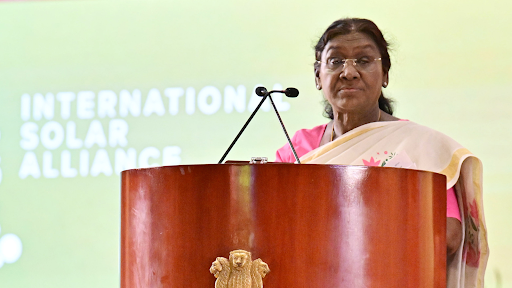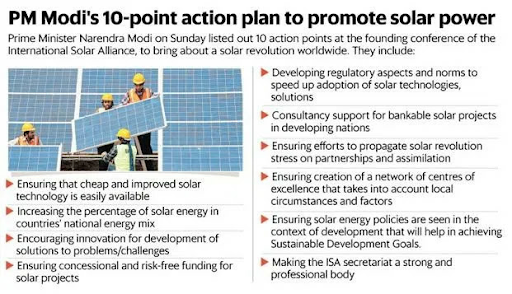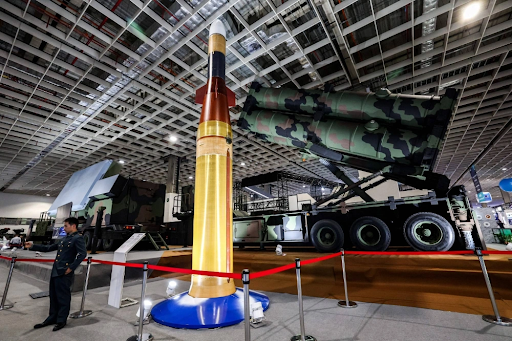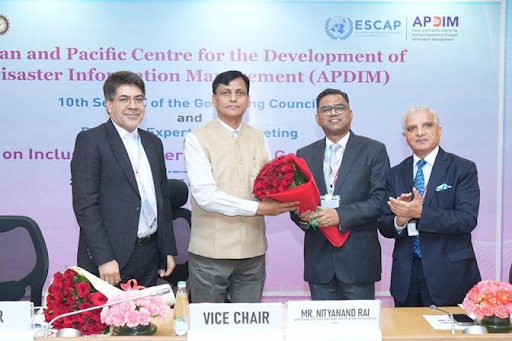



The International Solar Alliance, launched by India and France at COP21, unites over 120 nations to drive a global solar revolution. Aiming to mobilize $1 trillion by 2030, it promotes clean energy access through initiatives like OSOWOG, fostering sustainability, energy security, and climate resilience.

Copyright infringement not intended
Picture Courtesy: ddnews
President Droupadi Murmu inaugurated the Eighth Session of the International Solar Alliance (ISA) Assembly in New Delhi.
It was jointly established by India and France at COP21 in Paris in 2015.
It is an intergovernmental organization headquartered in Gurugram, Haryana, and is India's first international body of its kind.
Initially, the ISA focused on countries between the Tropics of Cancer and Capricorn. A 2020 amendment expanded membership eligibility to all UN member states.
Currently, 120 countries have signed the agreement, and 104 have ratified it.
Core Objectives and Vision:
Global Solar Facility (GSF)
Launched at COP27 in 2022, the GSF is a payment guarantee fund to de-risk investments in solar projects and attract commercial financing.
STAR-C (Solar Technology Application Resource Centre) Programme
This program builds capacity by training professionals and policymakers, also promotes digitization and AI innovation, aiming for a "Silicon Valley of solar" in the Global South.
Viability Gap Funding (VGF) Scheme
Provides financial grants (10-35% of project cost) for solar projects in Least Developed Countries (LDCs) and Small Island Developing States (SIDS).
One Sun, One World, One Grid (OSOWOG)
Launched by India and the UK at COP26, it seeks to create a transnational renewable electricity grid, targeting 2,600 GW of interconnection by 2050.
Global Floating Solar Framework
Supports member countries in using water bodies for clean energy, projecting a rise from 10 GW to 77 GW worldwide.
Green Hydrogen Innovation Centre
Advances solar energy R&D, knowledge-sharing, and advocacy in green hydrogen.
Solar for She Initiative
Promotes gender inclusivity by involving more women in solar energy projects.
Multi-nation Joint Bidding Platform
The 8th ISA Assembly will announce the world's first multi-country joint bidding platform for solar-cum-storage power to aggregate demand and reduce costs.
Global Leadership and Soft Power
As co-founder, India strengthens its leadership in climate diplomacy and energy security. The ISA headquarters in Gurugram symbolizes India's commitment to multilateralism.
Accelerating Domestic Energy Transition
India is on track to meet its 2030 renewable energy goals (500 GW non-fossil, 50% renewable), having already achieved 50% non-fossil installed capacity. It ranks 4th globally in renewable energy and 3rd in solar power.
Economic Opportunities and Self-Reliance
ISA's focus stimulates domestic manufacturing, with solar module capacity surging from 2 GW in 2014 to 100 GW, creating jobs and promoting innovation, aligned with "Aatmanirbhar Bharat." (Source : PIB)
Strengthening Financial Architecture
Innovate financial mechanisms, leveraging blended finance, green bonds, and guarantees to attract private investment. The Africa Solar Facility is a good start; similar regional facilities should be explored.
Intensifying Technology Transfer and Localisation
Facilitate advanced solar technology transfer and support local manufacturing. Expand STAR-C's goal of a "Silicon Valley of solar" in the Global South.
Addressing Grid Infrastructure and Storage
Prioritize investments in smart grids, advanced battery storage, floating solar, and regional interconnection.
Enhancing Capacity Building and Skill Development
Scale up training programs and establish more Centers of Excellence to build a robust skilled workforce.
Promoting Broader Partnerships
Expand collaborations with multilateral development banks, international financial institutions, and other global groupings to streamline efforts and mobilize resources.
Advocating for Supportive Policies
Continue to advocate for clear, consistent, and investor-friendly policy and regulatory frameworks that encourage solar deployment and cross-border energy trade.
The International Solar Alliance can become a leading force in the global energy transition by ensuring that clean, affordable, and sustainable solar energy is universally available.
Source: NEWSONAIR
|
PRACTICE QUESTION Q. Discuss the International Solar Alliance (ISA) as an instrument of India's foreign policy. 150 words |
The ISA is an intergovernmental organization that aims to increase the deployment of solar energy technologies to improve energy access, ensure energy security, and drive the energy transition in its member countries. It is a collaborative platform for countries rich in solar resources.
The ISA was jointly launched by India and France in November 2015, during the 21st Conference of Parties (COP21) in Paris. The idea was first proposed by Indian Prime Minister Narendra Modi.
The ISA's headquarters is in Gurugram, Haryana, India. The foundation stone for the permanent secretariat was laid at the campus of the National Institute of Solar Energy (NISE).







© 2025 iasgyan. All right reserved